Deep links are like shortcuts for apps, guiding users straight to the content they want without making them navigate through a maze of menus. It’s a game-changer for app owners: users are more likely to stick around when they don’t have to waste time searching.
Configuring deep links properly means smoother user journeys, higher engagement, and better marketing campaign results. In a world where audiences crave personalized, friction-free experiences, deep links boost conversions and make apps feel like they were built just for them.
What Are Deep Links?

Deep links are specialized URLs that direct users to a specific location or content within a mobile app, bypassing the app's homepage or main navigation. They’re like express lanes for apps.
Instead of dropping users off at the app’s front door and making them figure out where to go next, the app takes them exactly where they want to be.
There are different types of deep links. Standard deep links work only if the app is installed, while deferred deep links are activated until the app is downloaded before leading the user to the content. Then, there are contextual deep links, which take things up a notch by tracking specific user demographics, then tailoring their experience accordingly.
Unlike regular URLs, deep links don’t just send users to the app—they send them to the exact spot that matters.
Why Deep Links Matter for App Owners
For app owners, deep links are a no-brainer when it comes to making users' lives easier. By taking them straight to the content they’re looking for, deep links eliminate unnecessary steps and create a smoother, more enjoyable experience.
This directness keeps users engaged and boosts retention rates, as people are likelier to keep using an app that doesn’t waste their time. But it’s not just about convenience—deep links also play a significant role in marketing.
Deep links allow app owners to offer personalized content that targets users precisely, which can significantly increase conversions. In short, deep links turn casual users into loyal ones, making apps more efficient and engaging.
Configuring Deep Links: A Step-by-Step Guide
Setting up deep links can be challenging, especially for people lacking expertise. However, shorteners like Short.io help simplify the process. Here’s a step-by-step guide to configuring deep links.
Preparation

You’ll need some info about your app's Android and iOS setup before connecting with Short.io. Here's what you'll need for each platform:
Android
- Android App Package Name
- Android SHA256 Certificate Fingerprint
iOS
- Apple Team Identifier
- Apple Bundle Identifier
Now, let's explore how to find and enter this information. Let’s start with the Android Configuration.
Android Configuration
- Log into your Short.io account.
- Click Domain Settings.
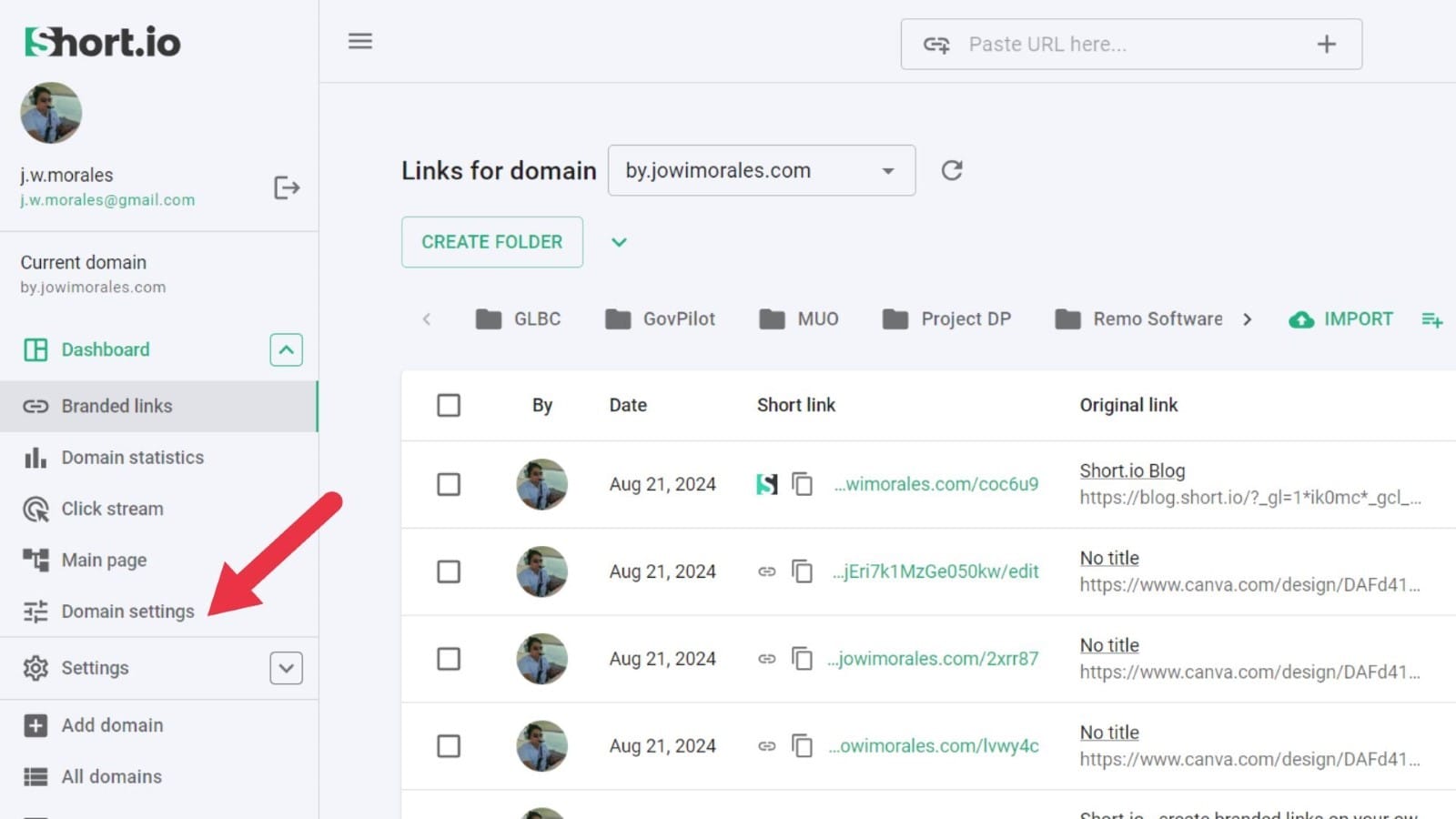
- Click Deep Links.
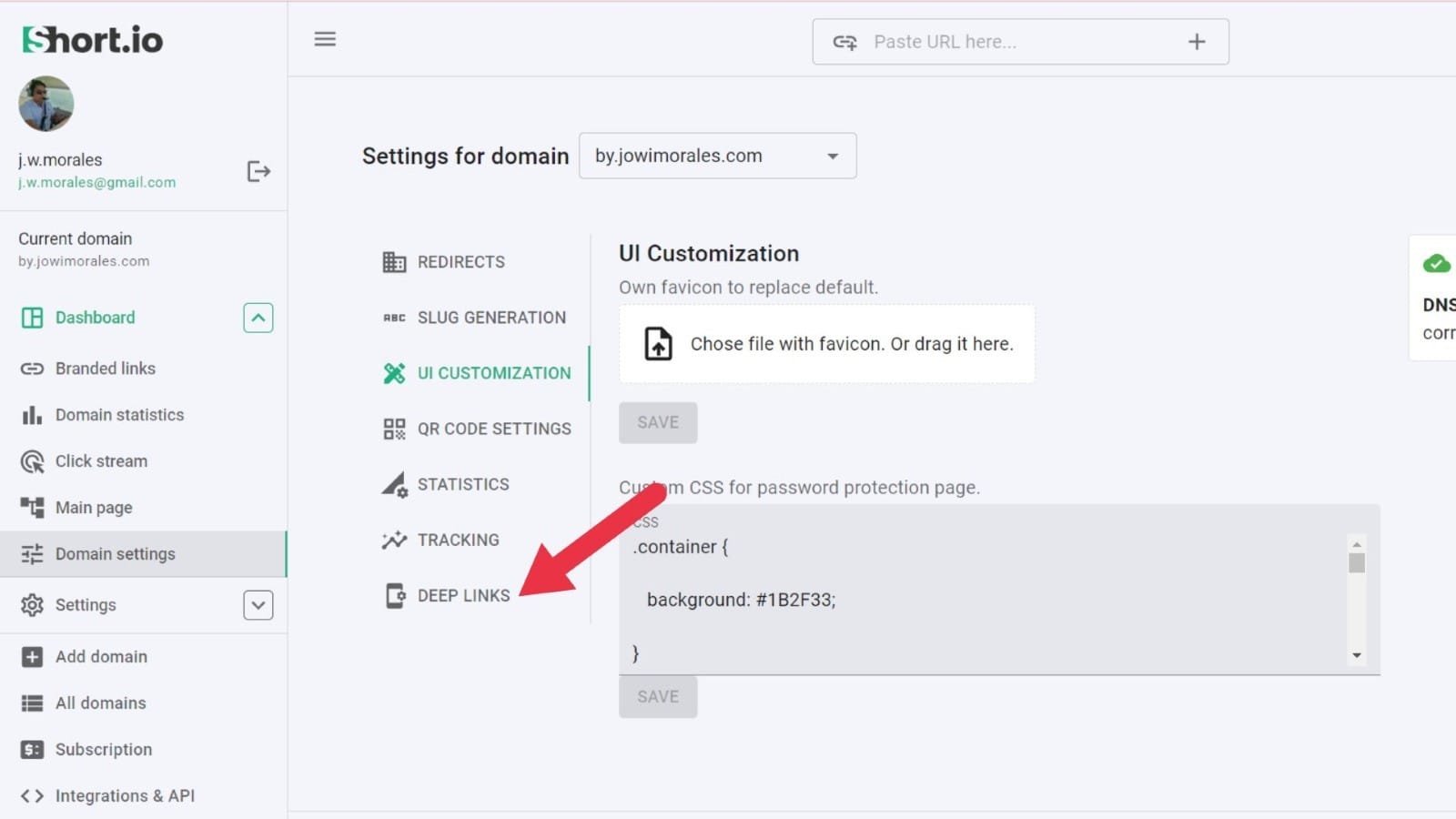
- Enter your Android App Package name in the required field.
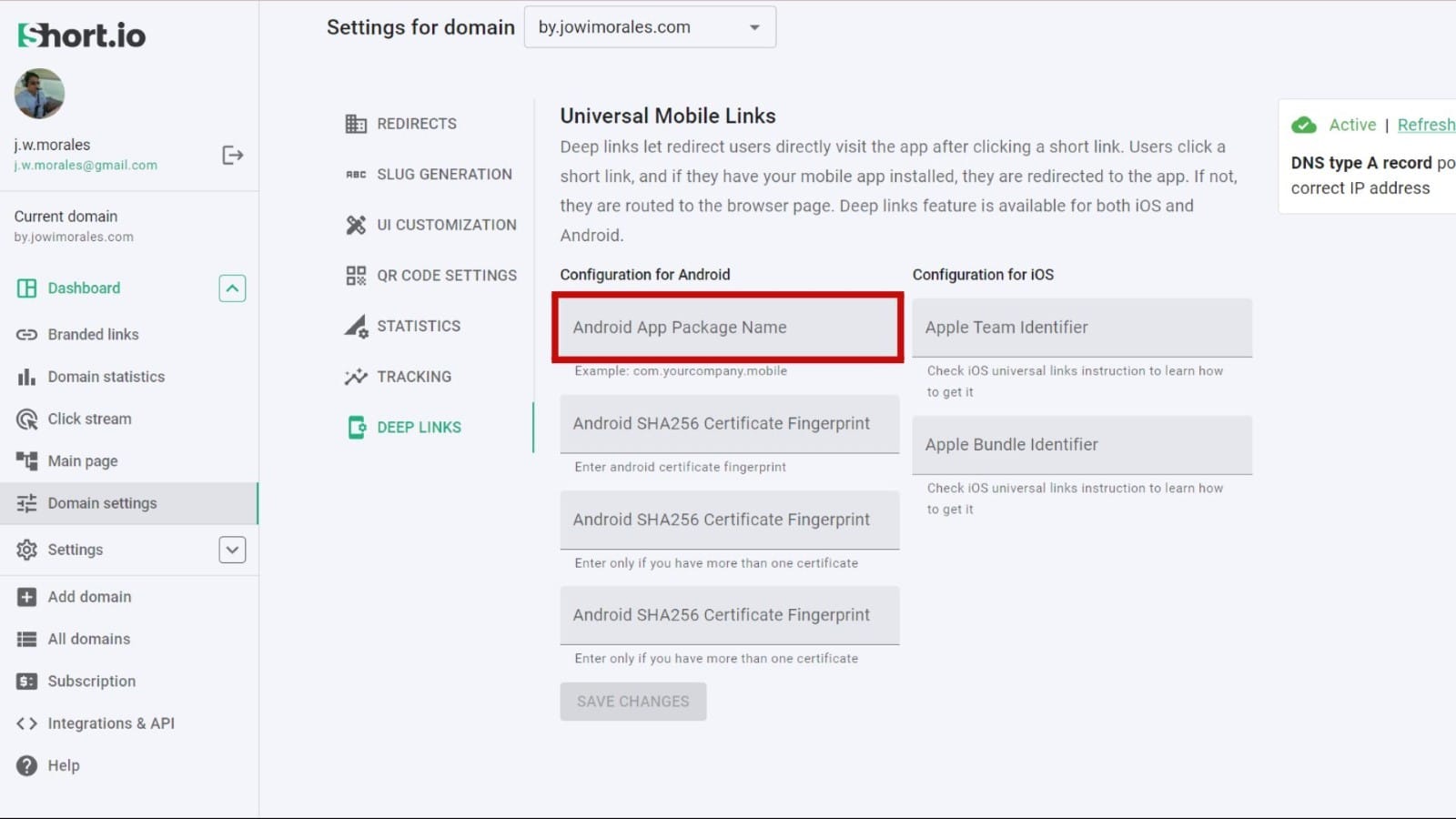
- An app's package name can be found in the URL of its Google Play Store listing. For example, in the URL play.google.com/store/apps/details?id=com.example.app123, the app's package name will be com.example.app123.
- If you’re using Android Studio, open your project. Open the AndroidManifest.xml file. You’ll find something like this:

- Enter your Android SHA256 Certificate Fingerprint in the required field.
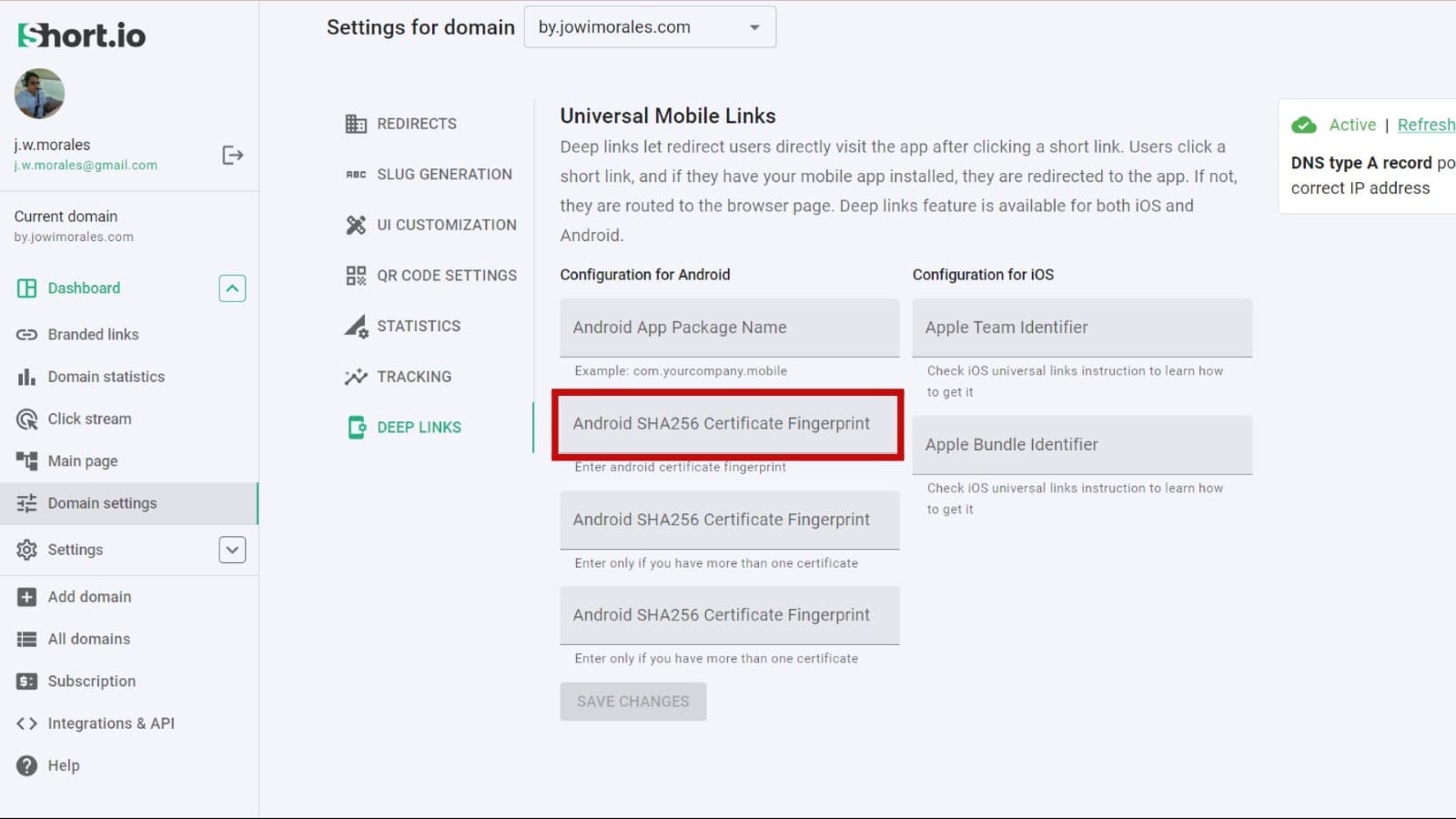
- To find your Android SHA256 Certificate Fingerprint, start by opening a terminal or command prompt.
- Run the following command:
- keytool -list -v -keystore <path_to_your_keystore> -alias <your_alias> -storepass <your_storepass>
- Make sure to replace the path to your keystore and the alias.
- Look for the SHA256 Fingerprint in the output. It will look something like this:

- Enter your Android SHA256 Certificate Fingerprint in the required field (Optional).
- This is only required if you have more than one certificate for your app, or if you have a different one for production and development.
- Click Save Changes.
Now, let’s head on over to setting up deep links for iOS.
iOS Configuration
- Log into your Short.io account.
- Click Domain Settings.
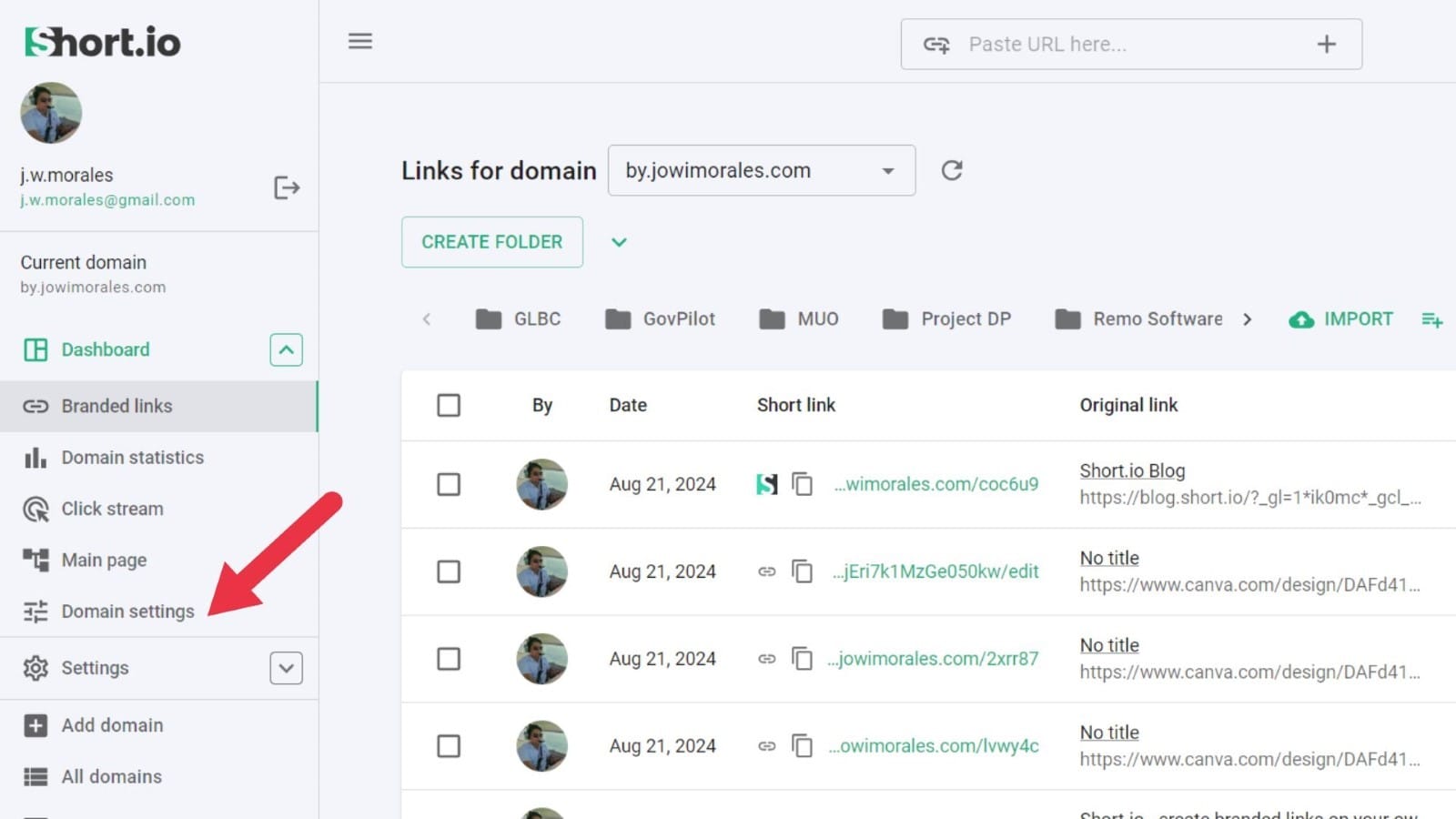
- Click Deep Links.
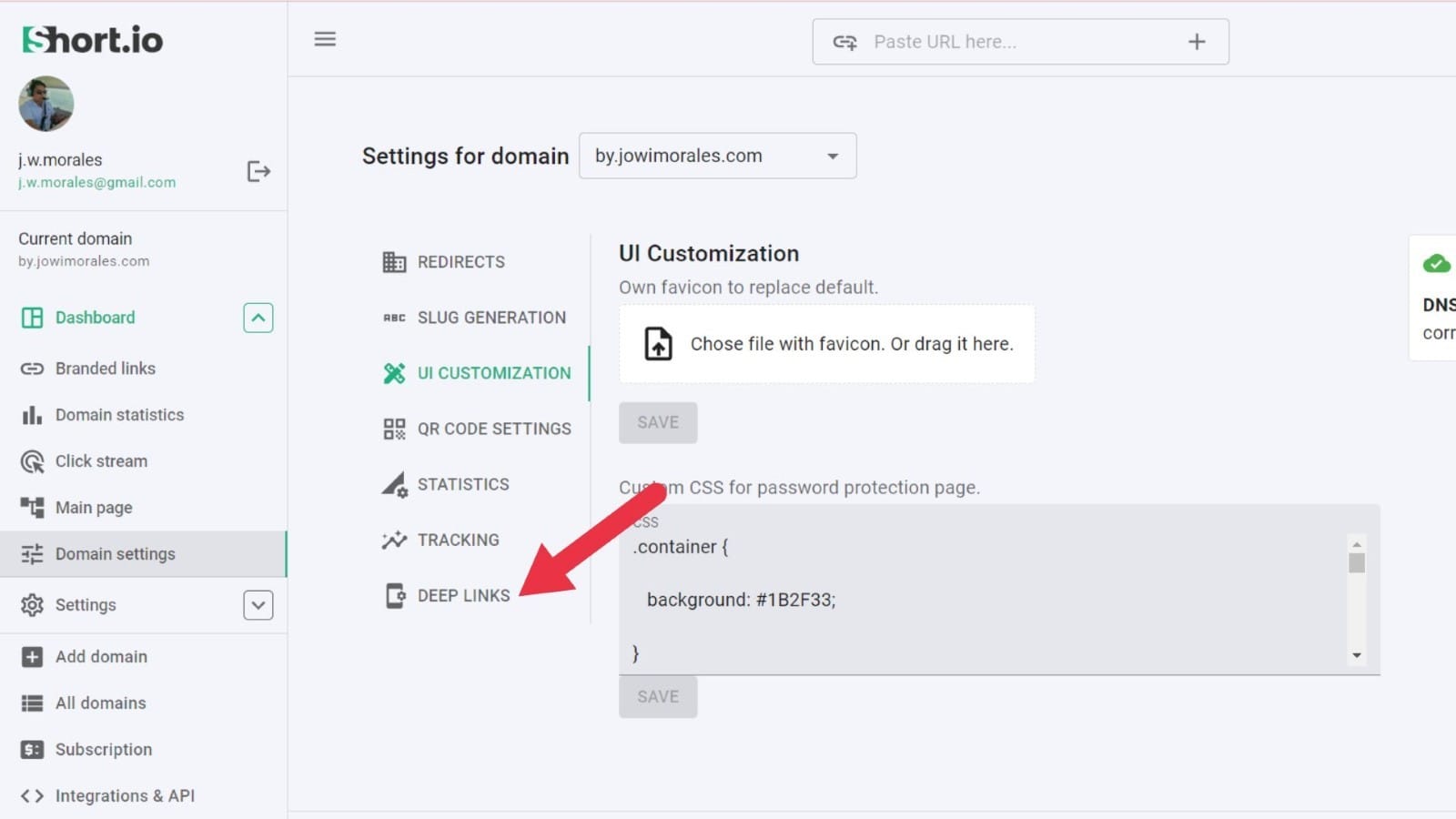
- Enter your Apple Team Identifier in the required field.
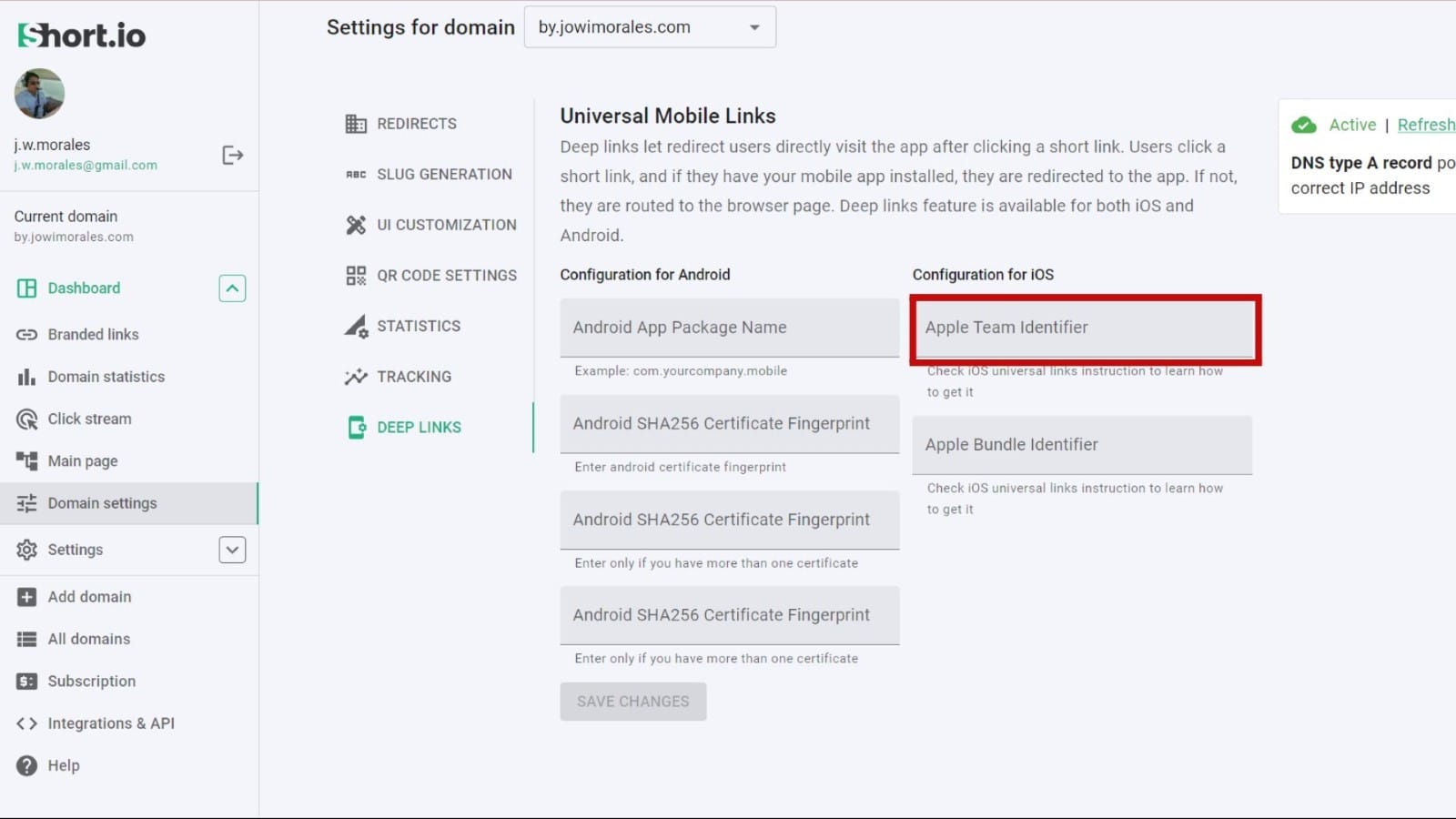
- To find your Apple Team Identifier, sign into your Apple Developer Account.
- Go to "Membership" and look for the Team ID (usually a 10-character code)
- Enter your Apple Bundle Identifier in the required field.
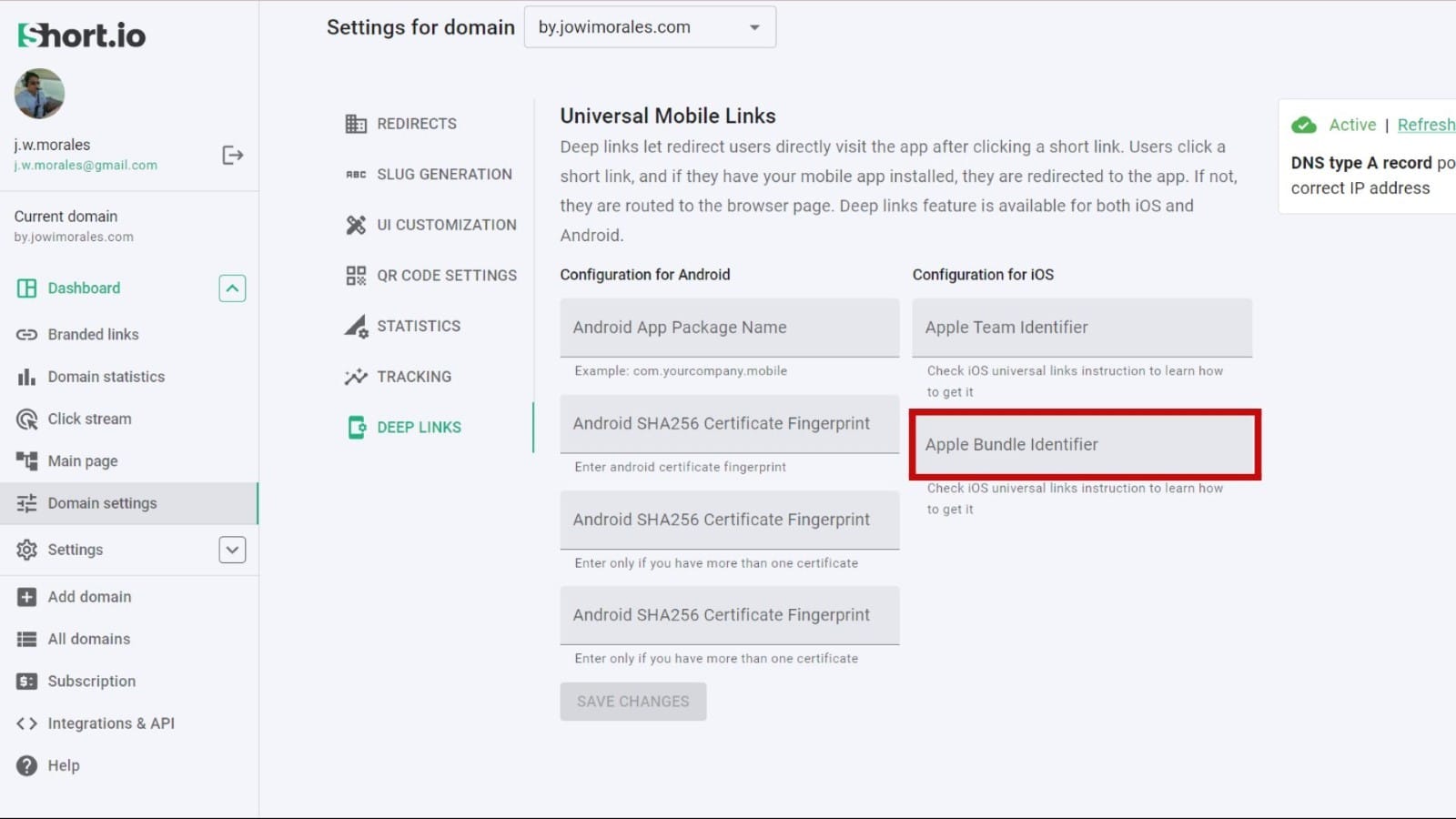
- To find your Apple Bundle Identifier, open your iOS project Xcode.
- Go to the General tab for your target.
- You’ll find the Bundle Identifier field, which looks like com.yourcompany.appname.
- Click Save Changes.
Final Notes
After saving, Short.io will enable deep links. So, whenever users click on a short link, they'll be redirected to your app (if installed) or a web page if the app isn’t installed.
Make sure your app is configured correctly to handle deep links. This may require updating your AndroidManifest and Info.plist files to recognize deep links.
Common Mistakes to Avoid When Configuring Deep Links

There are plenty of pitfalls to avoid if you want deep links to function smoothly. One of the most common mistakes is incorrect URL paths—if even a tiny error sneaks into your URL structure, the deep link won’t work.
It's also easy to forget to add meta tags, which are essential for ensuring deep links perform correctly across different platforms and devices.
Another issue arises when deep links aren’t tested thoroughly. A deep link might work perfectly on one device but fail on another. That's why testing your deep links across iOS, Android, and desktop browsers is critical to ensure consistency.
Lastly, not accounting for fallback options can lead to a subpar user experience. What happens if a user clicks a deep link but doesn’t have your app installed? Without a proper fallback, they’ll end up on a generic webpage or, worse, nowhere.
Configuring fallback URLs or app install prompts ensures users still land somewhere relevant.
Best Practices for Deep Link Configuration

When configuring deep links, there are a few strategies that can ensure they work effectively and create a better user experience.
First, ensure that your deep link routing rules are clear and well-organized. You want users to be taken exactly where you intend, without unnecessary redirects or confusing pathways.
Tracking and analytics are your best friends when monitoring the performance of deep links. Tools like Google Analytics or Firebase can help you track users' interactions with your links, measure engagement, and even spot potential weak points in your deep link strategy.
Additionally, A/B testing is a powerful tool for refining deep links further. By running different versions of your deep links, you can test user experience variations and find out what works best for your audience. This could involve testing various landing pages or experimenting with personalized links for user segments.
Another best practice is ensuring your app’s UI is optimized for deep link experiences. Once users are routed through the deep link, their experience inside the app should feel seamless, without abrupt transitions or confusing layouts.
This helps build trust and encourages users to engage more deeply with your app’s content.
Deep Links Will Elevate Your Business

In summary, deep links are more than just a technical feature—they’re a way to elevate user experiences, boost engagement, and increase conversions.
For app owners, properly configuring deep links is about more than functionality; it’s about creating a smooth, user-centric journey that keeps users coming back.
But remember, the key to success is in the details. From avoiding configuration mistakes to embracing best practices like testing and analytics, every step you take will shape the overall effectiveness of your deep link strategy.
Developers who invest in these small but essential details will create apps that stand out in a crowded marketplace.
Finally, keep your configuration up to date. As platforms evolve, so do their guidelines and best practices for deep links. Staying informed and adapting to these changes ensures that your deep links work flawlessly, providing the best experience possible for your users.
With the right approach, deep links become a powerful tool for driving user engagement, improving retention rates, and turning occasional users into loyal, long-term enthusiasts.

